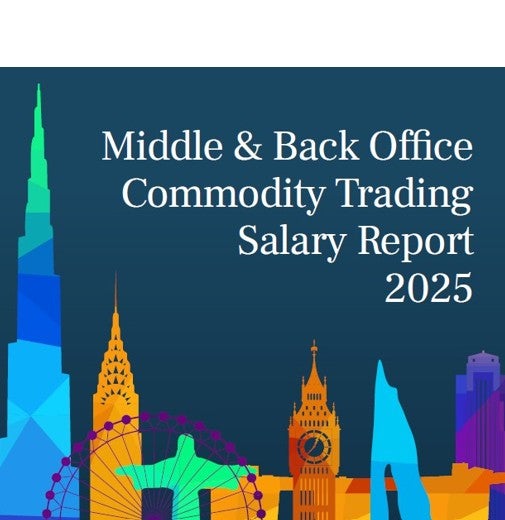When HC Talent Intelligence released its Front Office Compensation Report earlier this year, the results sparked a familiar conversation, one that ended, more often than not, with the same question: what about the people behind the desk? The Global Middle & Back Office Salary Report is our answer, says HC Talent Intelligence's Director, Mimi Chahal.
Discover HC Group's Global Middle & Back Office Salary Report
- 200+ roles across Risk, Finance, Legal, HR, and Technology.
- Global coverage spanning the UK, Switzerland, US, Singapore, UAE, and Brazil.
- Latest market intelligence on evolving reward design, retention strategies, and the forces shaping global pay outcomes.
Scale of Support
The scale of Middle and Back Office functions in energy and commodity trading is often overlooked. But for every front office trader, there are typically three or more professionals in middle and back office, spanning risk, technology and finance disciplines - and more.
In fact many of the roles we classify as ‘support’, from technology and accounting to trade finance and risk, now sit at the very centre of trading organisations - commanding compensation that sits well above equivalent upstream or corporate positions. This divergence has created a new set of challenges for leadership teams: it can distort internal pay equity, complicate workforce planning, and even slow commercial expansion.

Subscribe to the HC Talent Intelligence Newsletter
In this month’s HC Talent Intelligence newsletter, we break down the five essential leadership conversations that drive true retention across the commodities sector.
The Retention Equation: Why People Leave, and What Organisations Can Do About it
Diverging Trajectories
The view from 2025 is one of contrast. Risk, technology, and structured trade finance disciplines have moved ever closer to front-office economics, while finance, human resources, and compliance continue to adjust under the twin pressures of automation and offshoring. The difference lies in proximity, to traders, to data, to decisions. As one risk leader in Singapore put it, “risk isn’t the brake anymore; it’s the steering wheel.”
The geography of work tells its own story. In Singapore, rising costs and localisation policies have pulled risk and compliance salaries upward, even as finance and human resources functions migrate to Malaysia or India. In the Gulf, sovereign-backed firms are paying at international benchmarks for specialist talent, while independents compete through agility and career velocity. Each market reflects the same equation: value now follows capability, not positioning.
If there is one message that cuts through every conversation, it is this: support teams are no longer there to protect value; they are there to create it.
Challenges for 2026 and Beyond
And yet, amid this evolution, one comment from a recent interview stood out. A senior trader at a global energy major told us, half in jest, “No one actually knows where human resources is based anymore.” It was a throwaway line, but a telling one. As support functions scale and disperse, the risk is not just operational distance; it’s cultural distance. The challenge for 2026 and beyond will be to keep expertise close enough to matter.
Our goal with this report is to show how these disciplines are evolving together, as systems of value creation, not lines on an organisation chart. If there is one message that cuts through every conversation, it is this: support teams are no longer there to protect value; they are there to create it.
Director, HC Talent Intelligence

Explore 58 Pages of Trading Salary Insights
Access a unique, data-driven view of compensation across functions that power the world’s trading businesses.

